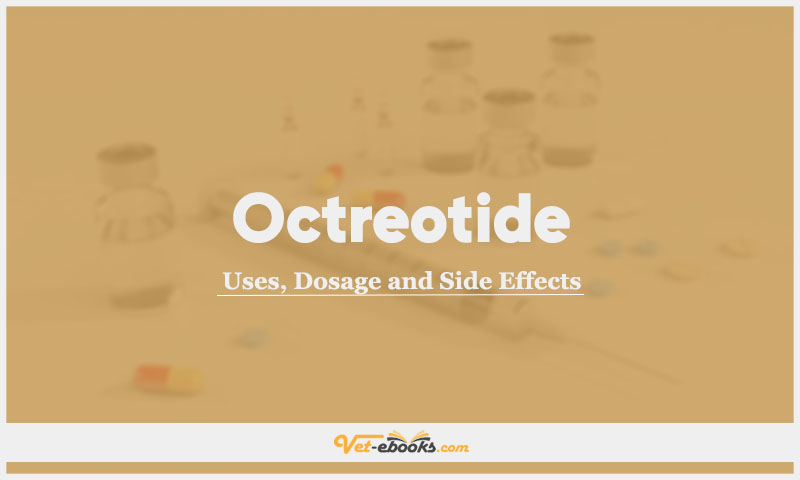Octreotide In Dogs & Cats: Uses, Dosage and Side Effects

Overview
- Somatostatin analogue that inhibits the release of several hormones.
Uses of Octreotide
- Management of pancreatic endocrine tumours (e.g. insulinoma, gastrinoma).
- Management of acromegaly.
Dose of Octreotide in Dogs and Cats
Dogs, Cats:
- 10–20 μg (micrograms)/animal s.c. q8–12h or 10 μg/kg s.c. q8h.
Drug Dosage Calculator
You Should Give:
Side Effects of Octreotide in Dogs and Cats
- GI disturbances (anorexia, vomiting, abdominal pain, bloating, diarrhoea and steatorrhoea), hepatopathy and pain at injection sites have been recorded in humans.
Contraindications of Octreotide in Dogs and Cats
- No information is available.
Some Notes:
- Studies indicate that octreotide is generally ineffective in treating the majority of insulinomas.
- Tumors that do not express somatostatin receptors do not respond to this treatment.
- In humans, doses of up to 200 μg per person every 8 hours are administered.
- Comparable doses of the aqueous formulation may be necessary in animals, but appropriate dosages for the depot preparation remain unknown.
- More recent somatostatin analogues like pasireotide show greater potential in treating acromegaly, but they tend to be costly.
Tip
Do You Want To Increase Your Veterinary Knowledge and Practical Skills?
You Can Now Browse and Download +3000 Books For Veterinary Professionals & Students Online.
Download Veterinary Books




















